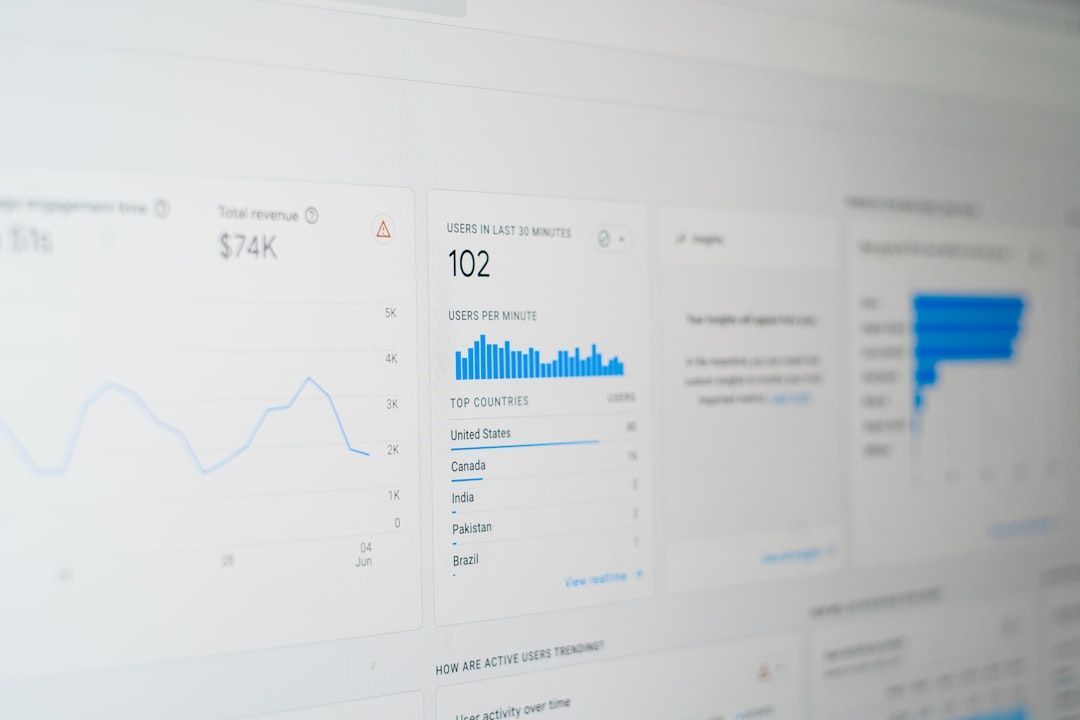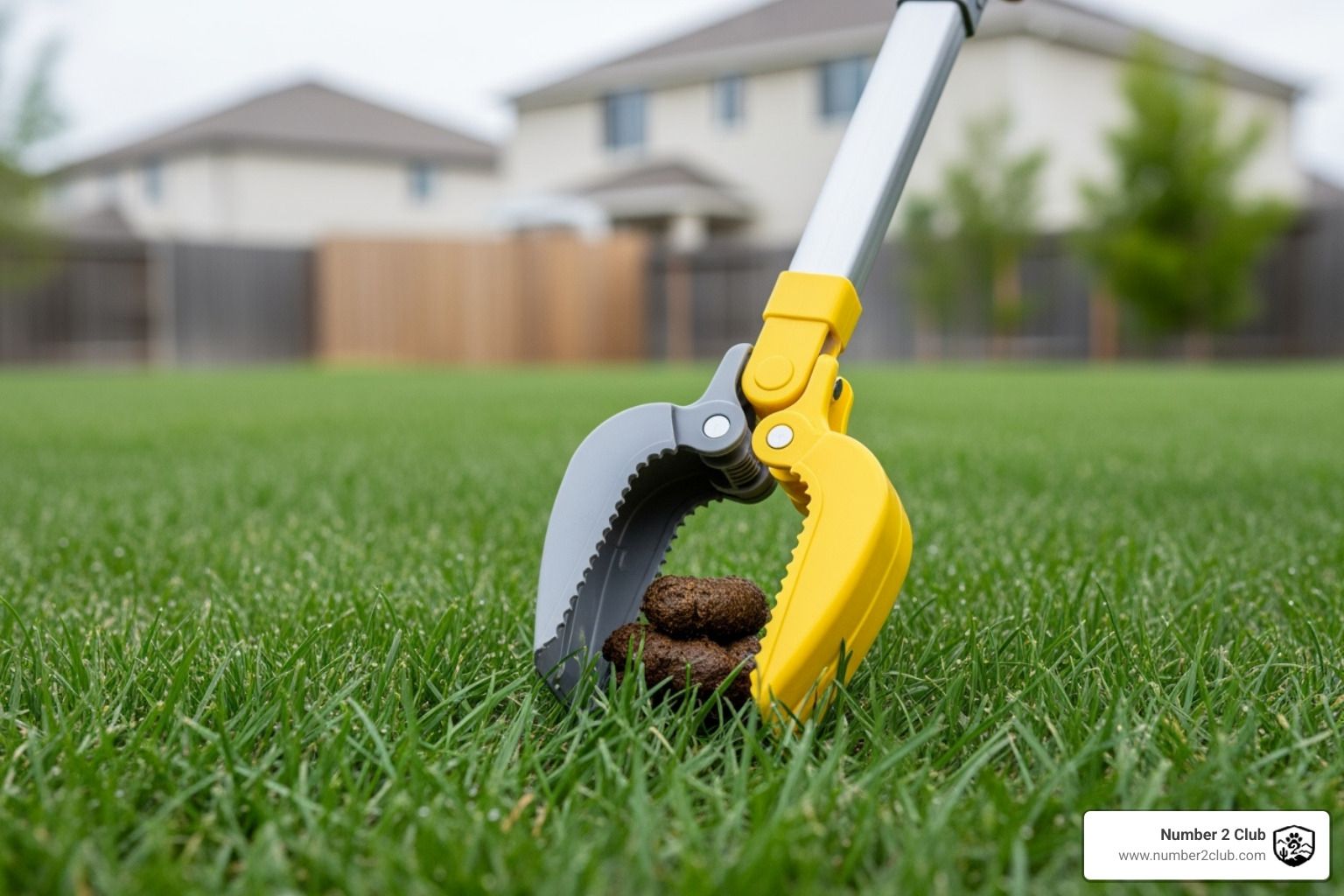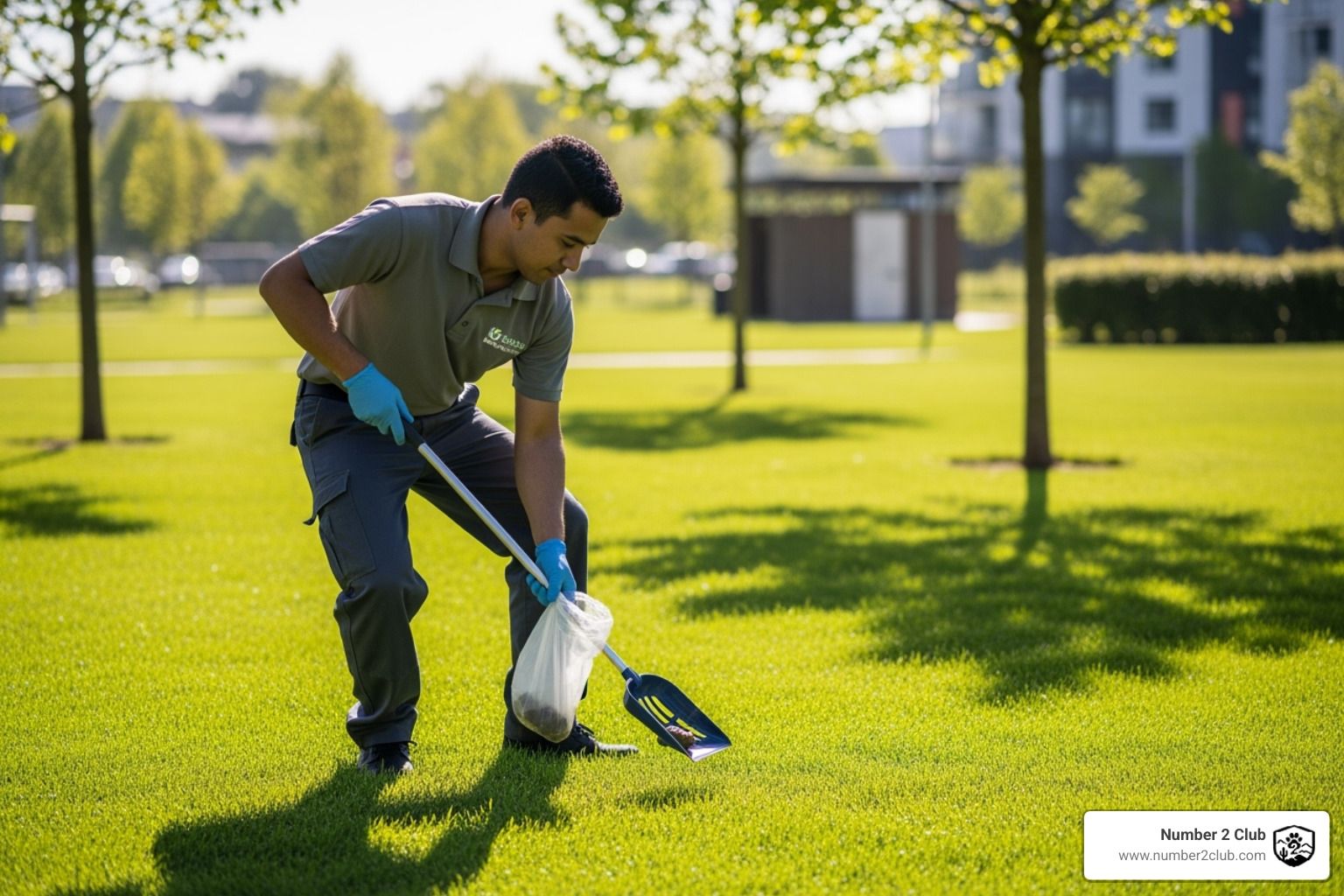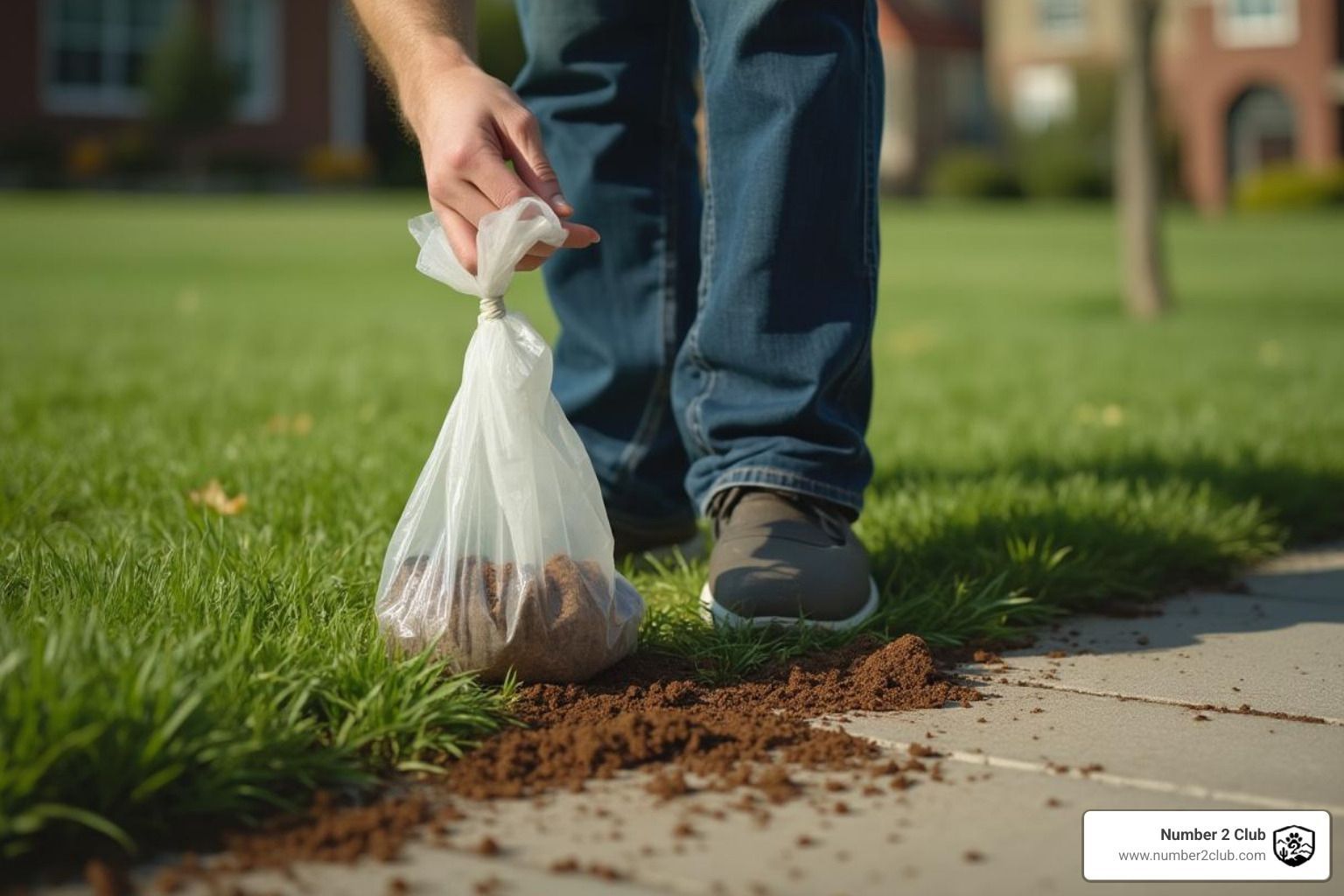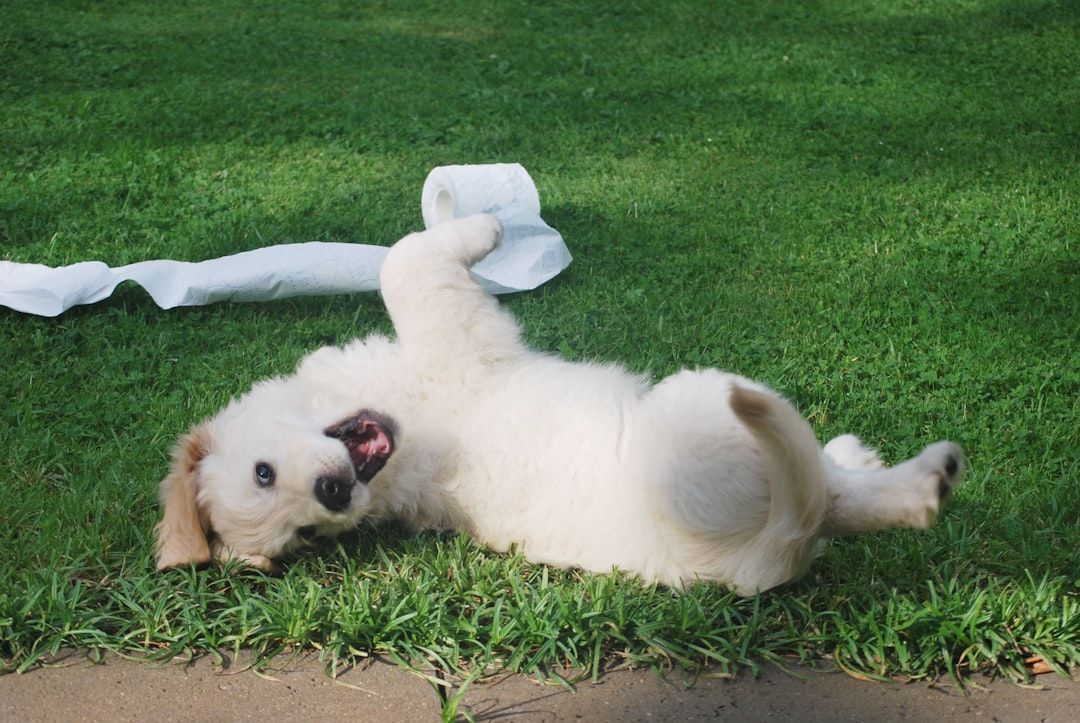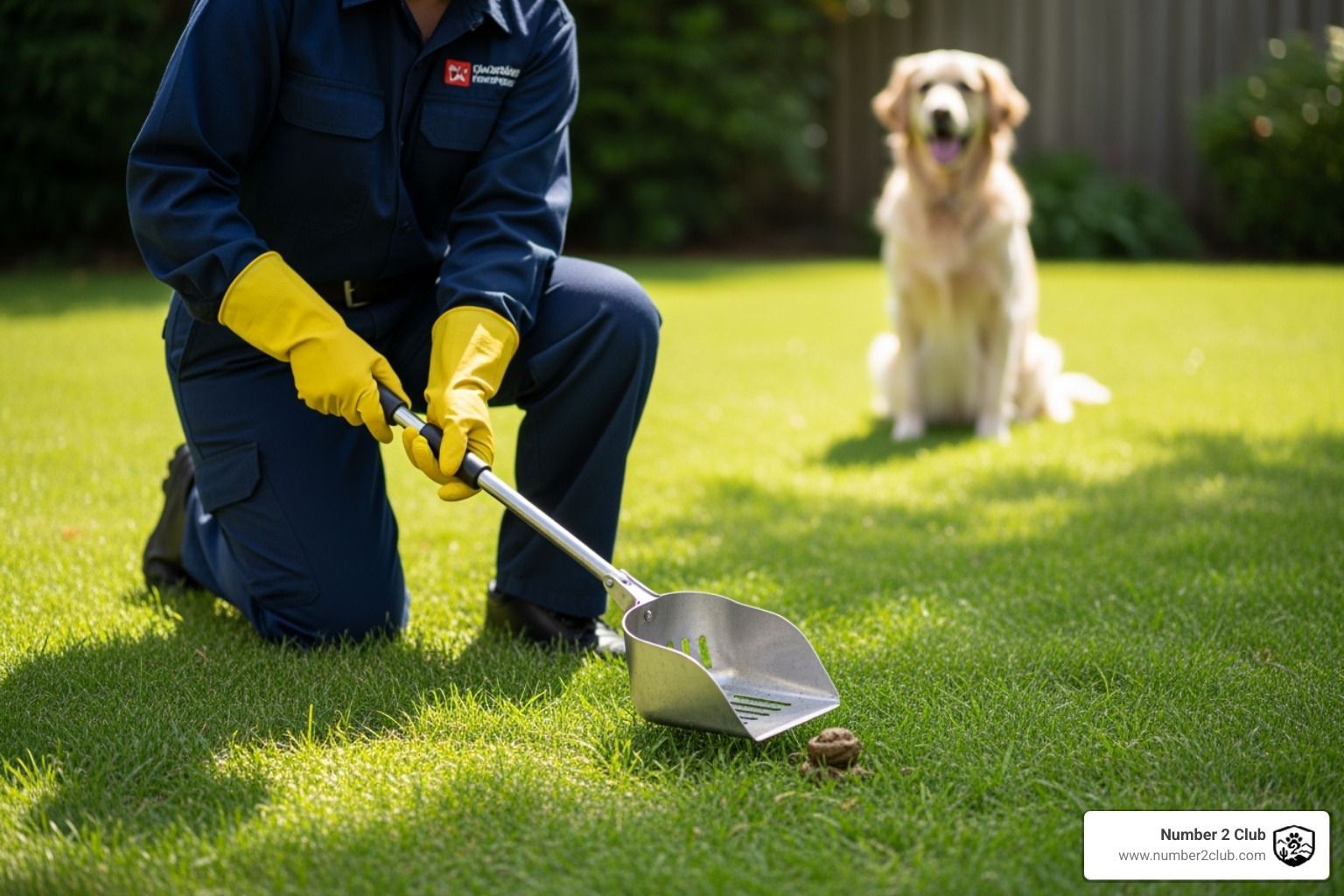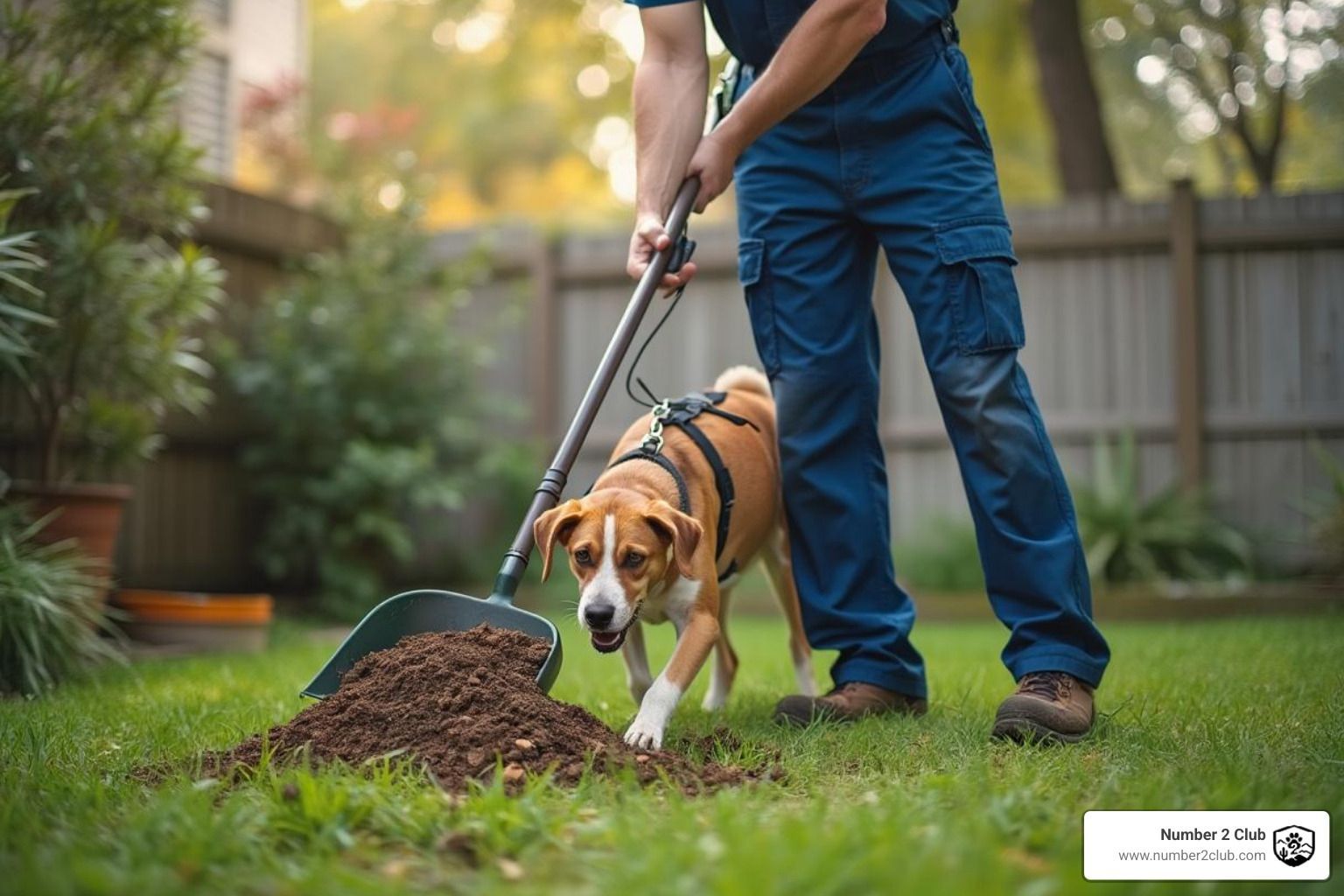Spring Cleaning Your Yard from Dog Poop Without Losing Your Mind
The Spring Thaw: When Winter's Hidden Treasures Emerge
For dog owners seeking spring dog poop clean up solutions, here's what you need to know:
- Professional services start at $12-30 per visit depending on yard size and dog count
- DIY cleanup requires: long-handled scooper, heavy-duty gloves, biodegradable bags
- Recommended frequency: Weekly cleanup for 1-2 dogs; twice weekly for 3+ dogs
- Health importance: Dog waste carries parasites that survive winter and can infect humans
- Lawn protection: Spring cleanup prevents nitrogen burn spots in your emerging grass
The average dog produces nearly a pound of waste daily—that's hundreds of pounds annually hiding under that winter snow, waiting for the spring thaw to reveal itself.
When the snow finally melts away, many dog owners face what professionals call the "spring surprise"—months of accumulated waste suddenly appearing across their yards. This winter buildup isn't just unsightly; it poses genuine health risks to your family and pets while threatening the health of your lawn just as growing season begins.
I'm Joseph Lopez from Number 2 Club, a premium dog waste removal service based in Arizona's West Valley, where I've helped hundreds of homeowners tackle the overwhelming task of spring dog poop clean up with our thorough, systematic approach to yard restoration.

Why Spring Dog Poop Clean Up Matters for Health & Lawn
When spring arrives in Arizona communities like Litchfield Park and Goodyear, many homeowners face an unpleasant surprise. Those frozen "poopcicles" that winter kindly hid are now thawed and ready to cause all sorts of problems in your yard.
Dog waste isn't just an eyesore or nose-offender—it's actually a serious health and environmental concern. Each tiny gram contains over 23 million fecal bacteria, plus parasites and pathogens that can survive in your soil for years. It's so problematic that the EPA classifies pet waste as a non-point source pollutant—putting it in the same category as oil spills and toxic chemicals!
When that waste sits in your yard, it doesn't magically disappear or nourish your lawn. Instead, it contaminates your soil with harmful bacteria, releases nitrogen that burns your grass, pollutes local waterways through runoff, attracts unwanted pests, and creates slippery hazards for everyone enjoying your outdoor space.
Health Risks You Can't Ignore
The parasites lurking in dog waste pose genuine threats to both humans and animals. Roundworms can survive in soil for up to four years and when accidentally ingested (especially by curious children), they cause digestive problems, respiratory issues, and sometimes even vision damage.
Hookworms are equally concerning—these tiny invaders can penetrate human skin directly, creating itchy, raised tracks in a condition doctors call cutaneous larva migrans. Nobody wants that souvenir from an afternoon in the yard!
Giardia might be microscopic, but its effects are anything but small. This parasite causes giardiasis, bringing uncomfortable symptoms like diarrhea, stomach cramps, and dehydration. It's particularly dangerous for little ones and people with weakened immune systems.
Then there's Campylobacteriosis, a bacterial infection that brings fever along with its digestive distress. According to research from the National Resources Conservation Service , areas with concentrated pet waste show significantly higher levels of these pathogens in both soil and water testing.
Impact on Grass, Gardens & Local Waterways
Despite what some might think, dog waste makes terrible fertilizer. In fact, it does the opposite of helping your yard:
Your lawn suffers from nitrogen burn spots where waste decomposes, creating those distinctive yellow or brown patches. In spring, when your grass is just waking up and beginning its growth cycle, this damage can persist all season long.
Using areas where dog waste has decomposed for growing vegetables is downright dangerous. Those invisible pathogens can transfer to your produce, creating serious health risks when you bring that harvest to your table.
When it rains, all that untreated waste washes straight into storm drains and eventually reaches local waterways. In Arizona communities like Verrado and Buckeye, this contamination affects our precious desert water resources. Environmental studies rank dog waste as the third largest contributor to water contamination in residential areas, making spring dog poop clean up not just about having a pretty yard, but about being a responsible community member.
Safety for Kids, Guests & Other Pets
Spring in Arizona means everyone wants to be outdoors, making your yard's safety more important than ever.
Children playing barefoot or with toys on the lawn are especially vulnerable to parasites in dog waste. Their natural tendency to put hands in mouths increases the risk of accidental ingestion and infection. As a parent, the last thing you want is your little one getting sick from something preventable.
Your dogs can track these pathogens into your home on their paws, spreading contamination to carpets, furniture, and anywhere else they roam. This creates an invisible trail of bacteria through your living spaces.
And let's be honest—nobody wants to host a backyard barbecue where guests have to steer a minefield of dog waste. Spring gatherings should be about good food and company, not carefully watching every step!
Even your pets aren't safe, as dogs can transmit parasites to each other through contact with contaminated soil. This creates a frustrating cycle of reinfection that's nearly impossible to break without thorough cleanup.

A thorough spring dog poop clean up isn't just about appearances—it's about creating a safe, healthy environment where your family, pets, and guests can enjoy the beautiful Arizona spring without worry.
Gearing Up: Tools & Supplies Every Spring Scooper Needs
Let's be honest - nobody dreams of spending their weekend picking up dog poop. But with the right equipment, your spring dog poop clean up can be quicker, easier, and (dare I say) almost pleasant. As someone who's scooped thousands of yards, I've learned what truly works.
Essential Tools for Effective Cleanup:
Think of your cleanup gear as your "poop patrol toolkit." The star of the show is definitely a long-handled scooper with serrated edges that grabs waste from any surface. I recommend one that's 32-40 inches long - your back will thank you! Pair this with heavy-duty gloves(disposable nitrile for occasional cleanup or reusable rubber gloves for regular scoopers).
Biodegradable waste bags aren't just better for the environment - they actually break down in landfills instead of preserving your pup's presents for eternity. I always recommend a dedicated collection bucket with lid too. There's nothing worse than making multiple trips across your yard with individual bags!
For those hard-to-spot deposits, a UV flashlight is surprisingly effective - waste actually glows under this special light, making dawn or dusk cleanup much more thorough. Small marking flags help you track where you've found waste in larger yards, ensuring you don't miss anything during your cleanup mission.
After collection, an enzymatic cleaner breaks down any residue at the molecular level rather than just masking odors. And don't forget hand sanitizer and disinfectant wipes for yourself and your tools when you're done!

Budget-Friendly DIY Kit
Not everyone needs professional-grade equipment, especially for smaller yards in Litchfield Park or Goodyear. You can create an effective DIY setup for under $15 with what I call the bucket method- simply line a small plastic bucket with a biodegradable bag and pair it with a hand rake or trowel.
Got an old kitchen spatula? Mark it clearly for outdoor use only and you've got a surprisingly effective tool for flat surfaces like patios. For a simple odor treatment, mix equal parts white vinegar and water in a spray bottle. While not as powerful as commercial enzymatic cleaners, it helps manage smells between deeper cleanups.
Even popsicle sticks or plastic cutlery can work as marking flags in smaller yards. Consistency trumps fancy equipment - basic tools used regularly will keep your yard cleaner than expensive gear that stays in the garage.
High-Tech Helpers
For those who'd rather minimize the "hands-on" aspect of spring dog poop clean up, technology offers some impressive solutions. Battery-powered automatic scoopers with built-in collection chambers reduce handling and odor exposure. Pet waste vacuums take this a step further by sucking waste directly into sealed containers - perfect for large areas or multi-dog households.
Advanced UV detection systems can be mounted on poles to systematically scan your yard, while smart yard mapping apps help track cleanup patterns and identify your dog's favorite "business" spots. These high-tech options range from $50-200, but for larger properties throughout Buckeye and Verrado with multiple dogs, they can be worth every penny.
Whether you choose the simple bucket approach or go high-tech, the right tools transform this dreaded chore into a manageable part of yard maintenance. And if you'd rather skip the gear entirely, that's exactly why services like Number 2 Club's Residential Dog Waste Removal exist - we bring all the professional equipment so you don't have to!
Step-by-Step Spring Dog Poop Clean Up Guide
After a long winter, your yard needs some serious TLC. As a professional who's cleaned countless Arizona yards, I've found that having a system makes spring dog poop clean up much less overwhelming. Let me walk you through how to tackle this necessary chore—whether you've got a tiny backyard in Litchfield Park or a sprawling property in Buckeye.
1. Wait for Optimal Conditions
Timing matters more than you might think. I always tell my clients to wait until the ground has dried a bit after snow melt or rain. Trust me, trying to scoop from muddy ground just creates a bigger mess! Early mornings work best since the angled sunlight creates shadows that make waste easier to spot. And don't forget to wear shoes you won't mind hosing off afterward—this isn't the time for your favorite sneakers.
2. Prepare Your Equipment
Taking a few minutes to get organized saves time in the long run. Line your collection bucket with a biodegradable bag to make disposal easier and more environmentally friendly. Put on those gloves (this is non-negotiable!), and have your marking flags ready for spots you might need to come back to. I always keep extra bags nearby because you'll likely need them. A spray bottle with enzymatic cleaner is your best friend for treating spots after removal.
3. Execute a Strategic Clean-Up Pattern
The difference between amateur and professional cleanup is all in the pattern. Start at one corner of your yard and work methodically in a grid, like you're mowing the lawn. Walking in straight, slightly overlapping lines ensures you don't miss anything. This is especially important in larger Arizona yards where it's easy to lose track of where you've been.
Pay special attention to fence lines, under trees, and those favorite spots where your pup always seems to go. These "hot zones" often hide multiple deposits that can be easily overlooked.
4. Proper Removal Technique
There's actually a right way to scoop! Position your tool directly under the waste and lift straight up rather than dragging, which can spread bacteria across your lawn. Place each scoop directly into your lined bucket. After removal, a quick spray with enzymatic cleaner helps break down any remaining residue and reduces odor—particularly important as our Arizona temperatures start climbing in spring.
5. Thorough Disposal
Once you've finished or filled a bag, tie it securely. If the bag feels thin or you're concerned about tears, double-bagging provides extra protection. Always place waste bags in outdoor trash cans with tight-fitting lids to prevent odors and keep out curious animals. Dog waste should never go in recycling or green waste bins—it contains pathogens that composting facilities aren't designed to handle.
6. Equipment Cleaning
Don't skip this final step! Rinse your tools with hose water (directing the spray away from garden areas), then disinfect and allow them to air dry completely. Remove gloves carefully and dispose of them if they're single-use, or clean thoroughly if reusable. Always finish with proper handwashing, even if you wore gloves the entire time.
| DIY Cleanup | Professional Service |
|---|---|
| $20-50 for basic equipment | $12-30 per visit |
| 1-2 hours of your time weekly | Zero time investment |
| Physical labor required | No physical effort required |
| Must handle waste directly | No contact with waste |
| Requires proper disposal | Includes professional disposal |
| Inconsistent results | Consistent, thorough results |
| No liability coverage | Fully insured service |
Mapping Your Yard for Spring Dog Poop Clean Up
Creating a simple yard map might seem like overkill, but it's a game-changer for thorough cleaning. I've seen this approach transform how my clients maintain their yards between our visits.
Start by sketching your yard's basic layout, including major features like patios, trees, and garden beds. Then divide this map into manageable sections—think 10-15 foot squares—that you can tackle one at a time. Be sure to highlight your dog's favorite spots, which typically include fence perimeters, entry points, and shady areas under trees.
Give special priority to areas where children play, where you entertain guests, and near garden beds. Finally, number your sections to create a consistent cleaning route you'll follow each time. This mapping technique is particularly valuable for larger properties in Verrado and Buckeye, where thorough coverage can otherwise be challenging.
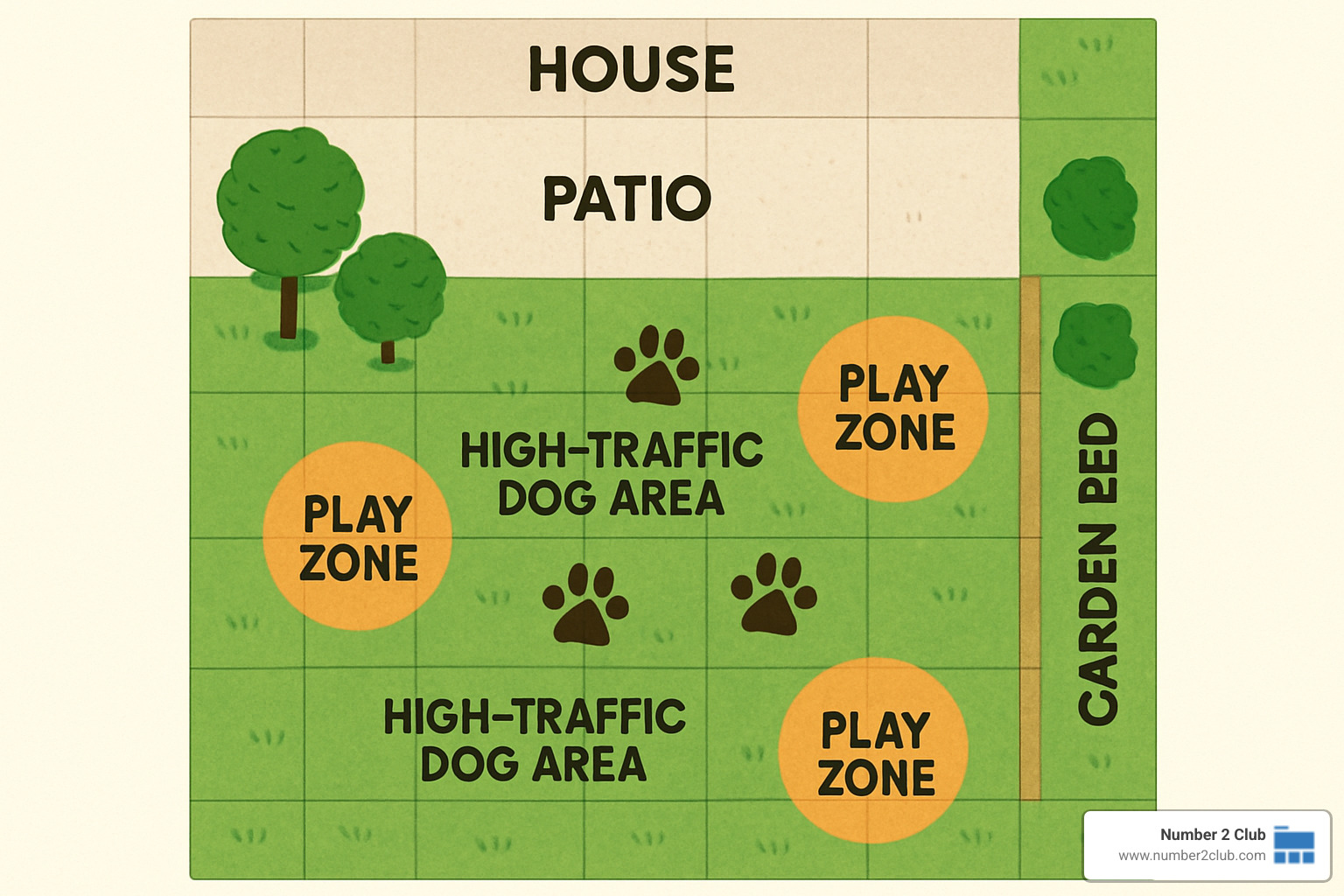
Fast Removal Techniques for Spring Dog Poop Clean Up
Different areas of your yard may require different approaches. After years of cleaning yards across Goodyear and Litchfield Park, I've developed these specialized techniques:
For grassy areas, use a rake-style scooper with teeth that can grab waste without damaging your lawn. Moving in the direction of grass growth reduces resistance and makes the job easier. Always lift rather than drag to prevent smearing that can spread bacteria deeper into your soil.
If you have gravel or desert landscaping (common in many Arizona homes), opt for a flat-edged scooper that slides under waste without displacing rocks. These areas need extra enzymatic spray since desert landscaping doesn't naturally process bacteria like healthy soil does.
Dealing with muddy conditions? If possible, wait until the ground firms up. When you can't wait, use a wider scooper to capture surrounding mud if necessary, and apply additional cleaner, allowing longer drying time to neutralize remaining bacteria.
For those rare frozen or semi-frozen waste situations during Arizona's colder months, a specialized scraper tool works well for ice-encrusted waste. Sometimes it's best to mark locations and return when conditions improve.
Eco-Friendly Disposal Options
While bagging and trashing is most common, environmentally conscious homeowners have several alternatives worth considering:
Dog waste composting systems are specialized containers designed to break down waste safely. These must reach temperatures over 140°F to kill pathogens and should never be used for vegetable garden compost. They require regular addition of carbon material like sawdust or leaves to work properly.
Dog waste septic systems function as underground containers with enzyme activators, similar to human septic systems but sized for pet waste. These work particularly well in Arizona's warm climate, which helps speed decomposition.
Some waste bags are marketed as flushable, but please check local regulations first—many water systems prohibit this practice. Never flush in homes with septic systems, and always remove waste from bags before flushing.
For the easiest eco-friendly solution, Number 2 Club provides environmentally responsible disposal as part of our service. We ensure waste is properly contained and delivered to approved facilities, reducing your environmental footprint through efficient routing across Litchfield Park, Goodyear, Verrado, and Buckeye.
Keep Your Yard Fresh & Waste-Free All Season
After your initial spring dog poop clean up, the battle isn't over—it's just beginning! Maintaining a clean yard through Arizona's warm seasons takes some dedication, but I promise it's worth the effort. Here's how our Number 2 Club customers keep their outdoor spaces pristine from spring through summer:
Establish a Regular Schedule
Consistency is truly the secret to a poop-free paradise. For homes with just one or two furry friends, a weekly cleanup usually does the trick. But if you're blessed with three or more dogs, you'll want to bump that up to twice weekly to prevent the dreaded buildup.
I always remind my customers in Goodyear that rainfall is your cleanup schedule's wild card. Those desert downpours often reveal hidden "treasures" that were just waiting for the right moment to appear. A quick scan after the rain dries up can save you from unpleasant surprises later.
And if you're planning a backyard barbecue or birthday party, do yourself (and your guests) a favor by scheduling a thorough cleanup 1-2 days beforehand. Nothing ruins outdoor appetites faster than an unexpected poop findy!
Create a Designated Potty Zone
One of the smartest moves you can make is directing your dog to a specific bathroom area. This approach has transformed yard maintenance for many of our clients in Verrado and Litchfield Park.
Choose a spot that's somewhat removed from your main living and entertaining areas, and definitely keep it away from water sources like pools or garden ponds. Using a different ground material—like pea gravel or mulch—helps your dog understand that this zone has a special purpose.
Many of our customers have had great success adding a simple border of rocks or landscape edging to create a visual boundary. For extra encouragement, consider installing a "pee post" or commercial attractant that makes your dog think, "Yes, this is definitely where I should do my business!"
Implement a Family Responsibility System
Let's be honest—no one person wants to be the designated poop scooper forever. Sharing is caring, especially when it comes to yard cleanup!
I've seen great success with families who create a rotating chore chart, assigning specific yard sections to different family members. This approach works wonderfully in larger properties throughout Buckeye, where dividing and conquering makes the task less overwhelming.
Some families even establish small rewards for consistent participation—movie night picks or dessert choices can be powerful motivators! Using a shared digital reminder system keeps everyone accountable without the need for parental nagging.
Use Preventative Treatments
Being proactive about your lawn care can dramatically reduce the impact of dog waste. Applying lawn lime in spring helps counteract the nitrogen that causes those unsightly yellow burn spots in your grass.
Monthly enzymatic lawn treatments work wonders for breaking down residual waste particles that scooping might miss. These treatments are especially helpful in Arizona's heat, where odors can intensify quickly.
For areas that seem to attract your pup repeatedly, consider applying commercial odor-control granules. And don't neglect those damaged patches—reseeding promptly prevents erosion and keeps your yard looking its best throughout the season.

Training Your Dog to a Potty Zone
Teaching your dog to use a designated bathroom area makes spring dog poop clean up infinitely more manageable. The process takes some patience, but the payoff is enormous.
First, select the perfect location—somewhere accessible but not central to your outdoor living space. Keep it away from areas where you entertain or children play, and make sure it's not right against your neighbor's property line (nobody wants that kind of boundary dispute!).
Creating a distinct surface helps your dog understand the purpose of this special zone. Pea gravel works wonderfully and is gentle on paws. Wood chips or bark mulch are also excellent choices, though I always warn my clients to avoid cocoa mulch, which can be toxic to dogs. Some homeowners in our higher-end Verrado communities have even installed dedicated sections of pet-friendly artificial turf.
The training itself requires consistency and positive reinforcement. Start by leading your dog on-leash to the area when they typically need to go. Use a clear, consistent command like "go potty" and reward immediately after success with enthusiastic praise and treats. Gradually increase the distance before giving the command, and within a few weeks, most dogs catch on completely.
Remember to maintain this area diligently—clean it daily and refresh the materials seasonally. This prevents your dog from avoiding the zone due to buildup and keeps odors under control for your family's enjoyment.
Odor Control & Lawn Recovery
Spring in Arizona brings warmth that can intensify pet waste odors, making proactive management essential. After removing waste, spray enzyme-based deodorizers directly on the affected soil—these products break down odor-causing compounds rather than just masking them.
For particularly stubborn spots, activated charcoal works wonders by absorbing odors at the molecular level. A diluted hydrogen peroxide solution (one part peroxide to four parts water) can also tackle persistent problem areas. Just avoid ammonia-based products, which often attract dogs back to the same spot—defeating your whole purpose!
Restoring damaged lawn areas requires some targeted care. After cleaning, water thoroughly to dilute any remaining nitrogen. Applying a thin layer of gypsum helps neutralize soil pH, creating better conditions for new growth. When reseeding, choose drought-resistant grass varieties that stand up to Arizona's challenging climate.
Many of our clients in Litchfield Park and Goodyear have found success creating transition zones with stone or gravel between potty areas and the main lawn. This simple design element reduces tracking and cross-contamination while adding visual interest to your landscaping.

With these approaches, even heavily used yards can remain fresh and inviting throughout Arizona's warm seasons. And remember—if maintaining your yard becomes overwhelming, Number 2 Club is always here to help with our professional waste removal services.
Frequently Asked Questions about Spring Dog Poop Clean Up
How often should I scoop once the snow is gone?
Living in Arizona's West Valley means our "snow" is minimal, but the principle remains the same - when winter ends, waste cleanup becomes crucial. Based on years of experience serving local yards, here's what I recommend:
Start with daily checks during your initial spring cleanup phase. This helps you catch up after winter's accumulation without feeling overwhelmed. Once you're caught up, households with multiple furry friends should aim for twice-weekly maintenance. The more paws in your yard, the more frequent your cleanup schedule should be!
For homes with just one dog and average-sized yards, weekly scooping usually suffices. And don't forget to head out after those desert rainstorms, regardless of your regular schedule. Rain has a sneaky way of revealing hidden deposits you might have missed.
I've noticed among our Number 2 Club clients in Litchfield Park and Goodyear that consistency is truly the key. Regular smaller cleanups feel much more manageable than occasionally tackling a major waste situation. Many families find that our weekly professional service hits that sweet spot between maintaining a clean yard and preserving their precious weekend time.
Are there truly eco-friendly ways to dispose of dog waste?
Absolutely! As someone who handles dog waste professionally, I'm happy to share several environmentally responsible options:
Using biodegradable bags for regular trash disposal is the most accessible option. While the waste still ends up in landfills, these specialized bags break down much faster than standard plastic ones, reducing long-term environmental impact.
For the eco-conscious homeowner, dog waste composters like the Doggie Dooley create mini underground septic systems that naturally break down waste. These work particularly well in our warm Arizona climate where decomposition happens more quickly.
Some forward-thinking municipalities now offer industrial composting programs that accept pet waste in special compostable bags. This service varies by location, so check with your local waste management department.
For the truly dedicated, vermiculture systems(specialized worm composting) can process dog waste, though these require careful management and shouldn't be attempted without proper research.
Of course, professional services like Number 2 Club handle disposal responsibly in compliance with all local environmental regulations, taking the guesswork out of the equation.
One important note I always emphasize: Never compost dog waste for use on edible plants or vegetable gardens. Pathogens can survive standard composting temperatures and potentially contaminate your food.
What if I just don't have time?
This is exactly why I founded Number 2 Club! As a busy homeowner myself, I understand that spring dog poop clean up often falls to the bottom of the priority list. Professional waste removal services offer several advantages that many of our clients find invaluable:
The average homeowner spends 1-2 hours weekly on yard waste cleanup – that's time you could spend enjoying our beautiful Arizona weather instead. Our professional team is trained to find waste that casual cleaning might miss, ensuring a truly clean yard.
We maintain a consistent schedule regardless of weather, travel, or personal conflicts. When you're rushing to work or enjoying a weekend away, we're still taking care of business. Plus, you'll never need to worry about storage or transportation of waste – we handle it all.
Perhaps most importantly, professional service minimizes your contact with potentially harmful pathogens. Why risk exposure when experts can handle it safely?
Our services throughout Litchfield Park, Goodyear, Verrado, and Buckeye start at just $12-15 per visit depending on yard size and number of pets. When you consider the value of your time and the thoroughness of professional service, many clients find it's actually the more economical choice.
What are the most common mistakes in spring yard cleanup?
After serving hundreds of Arizona homes, I've noticed several recurring mistakes that can make spring dog poop clean up more difficult than necessary:
Waiting too long tops the list. The longer waste sits in your yard, the more it breaks down into the soil, making cleanup harder and increasing contamination. Inadequate protection is another common issue – skipping gloves or proper tools increases your health risks significantly.
Many homeowners also struggle with improper disposal, such as placing waste in recycling or green waste bins. Some have even attempted to burn it (please don't!). Inconsistent cleaning leads to missed waste and persistent odor problems that can be difficult to resolve later.
I often see people using the wrong products after cleanup, like applying standard fertilizers to contaminated areas, which can actually worsen lawn damage. Many also make the mistake of overlooking hidden areas under bushes, along fence lines, or in remote corners – places dogs often prefer for their business.
Finally, ignoring the weather can make your job much harder. Attempting cleanup immediately after rain when soil is soft means waste can smear rather than lift cleanly, creating an even bigger mess.
By avoiding these common pitfalls, your spring dog poop clean up will be more effective and significantly less unpleasant.
How can I get my children involved without grossing them out?
Making cleanup a family activity teaches responsibility while lightening your workload! As a father myself, I've found several approaches that work well:
Create a simple point system where kids earn points for each waste pile properly removed, with rewards at certain thresholds. This transforms the chore into a challenge with tangible benefits. Use cleanup time as an opportunity for learning about environmental responsibility and how waste affects our ecosystem.
Assign age-appropriate tasks based on comfort level. Younger children can mark locations with flags while older ones handle actual removal. Investing in child-sized tools makes participation more engaging – proper equipment sized for smaller hands helps kids feel capable and included.
Try making it a game with time challenges or "cleanup bingo" to transform the chore into something more enjoyable. Most importantly, lead by example by demonstrating a positive attitude rather than treating it as a dreaded task.
Many of our clients in family-friendly communities like Verrado have shared that establishing these habits early creates lifelong responsibility around pet ownership. Plus, there's nothing quite like the pride children feel when they contribute meaningfully to family responsibilities – even the less glamorous ones!
Conclusion
Let's be honest— spring dog poop clean up isn't exactly the highlight of pet ownership. But as we've explored throughout this guide, it's absolutely essential for creating a yard that's not just beautiful, but safe for everyone who uses it.
When the snow melts and reveals winter's hidden "treasures," you essentially have two choices: roll up your sleeves with the tools and techniques we've shared, or call in the professionals. Either way, what matters most is addressing the situation promptly and thoroughly.
I've seen how a single afternoon of dedicated cleanup can transform a yard from an unpleasant minefield into a welcoming outdoor space. Many of our clients in Litchfield Park and Goodyear tell us the relief they feel after that first comprehensive spring cleaning is absolutely worth the investment.
Spring dog poop clean up goes beyond just making your yard look better. You're protecting your children from parasites that can cause serious illness. You're preventing your lawn from developing those unsightly brown patches just as the growing season begins. You're being a good neighbor by keeping waste from washing into shared waterways. And you're creating a more enjoyable environment for your four-legged family members too.
For many busy families throughout Verrado and Buckeye, our Number 2 Club service provides the perfect solution—professional-grade cleaning on a regular schedule without any effort on your part. Our trained technicians use systematic grid patterns and professional equipment to ensure no waste is missed, even in those hard-to-see spots along fences or under bushes.
Whether you choose the DIY route or prefer to leave it to the professionals , consistency is key. A one-time spring overhaul followed by regular maintenance will keep your yard fresh and inviting all season long.
Ready to reclaim your outdoor space this spring? Number 2 Club is your local partner for a poop-free, spring-ready yard throughout Arizona's West Valley. We handle the dirty work with a smile so you can get back to enjoying the things that matter—like playing fetch with your dog in a clean, safe yard instead of constantly watching where you step.
After all, life's too short to spend it scooping poop. Unless you're us—then it's our pleasure to make your life a little cleaner and a whole lot happier!

